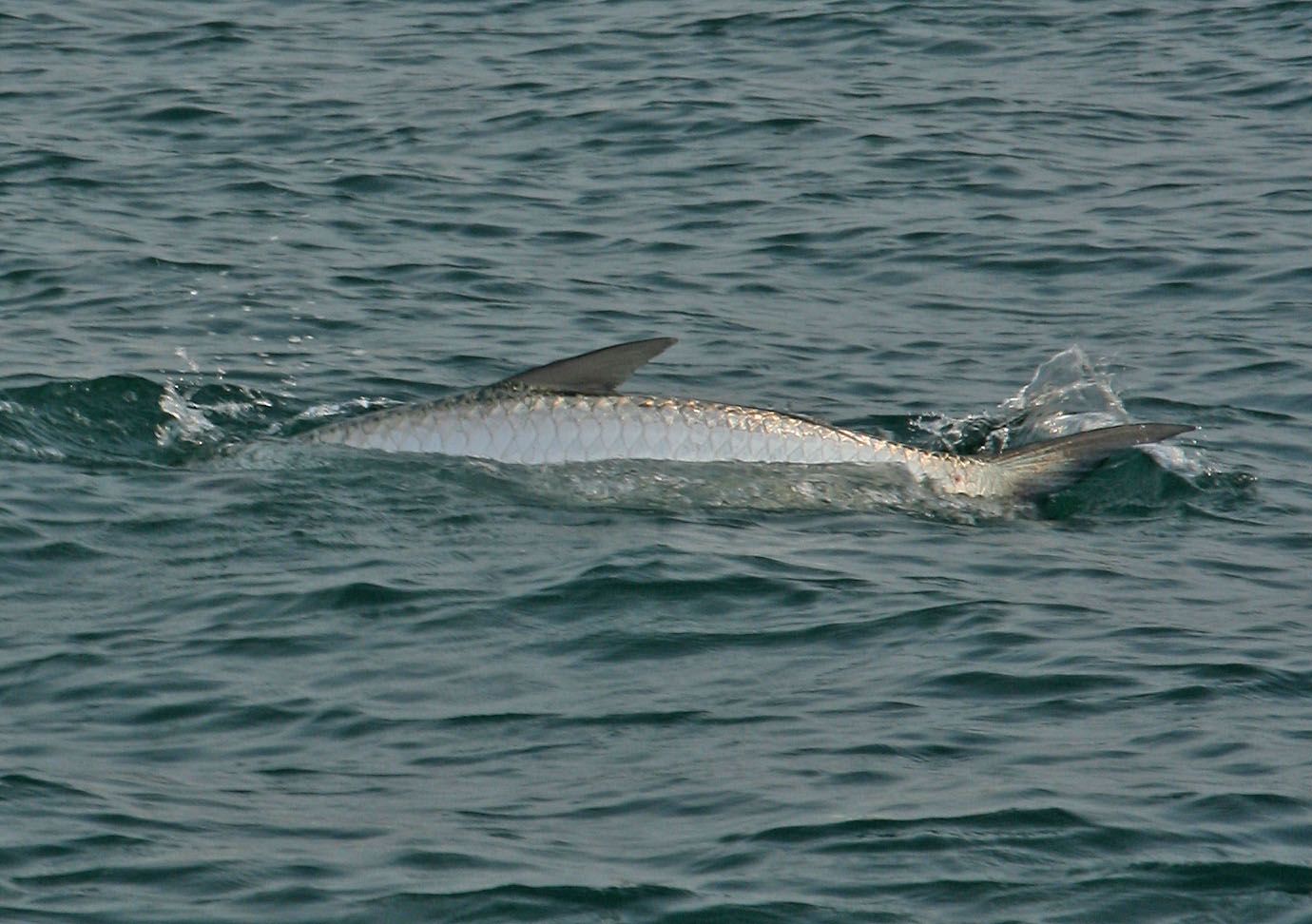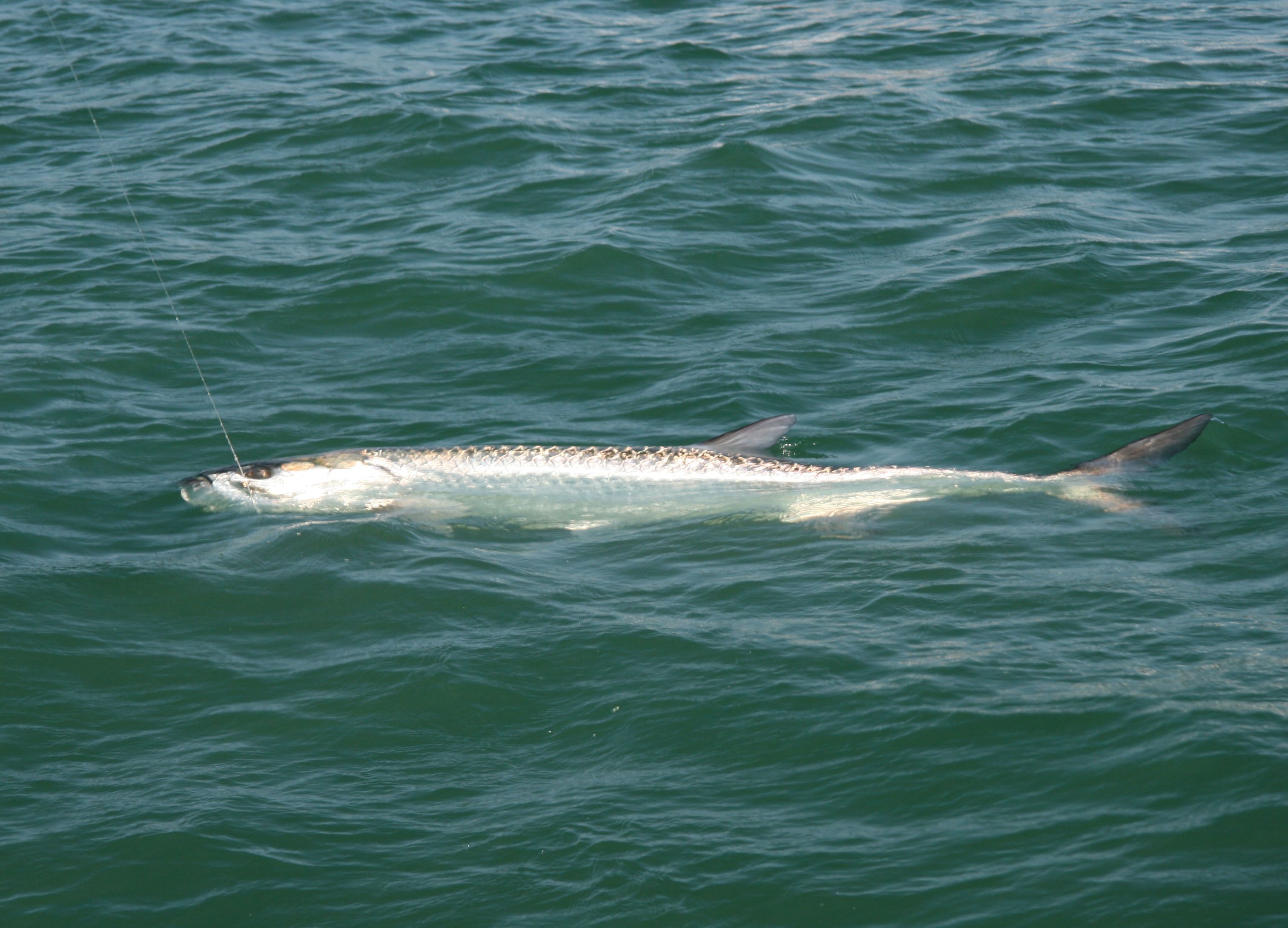Tarpon Time in Florida Means Royal Thrill with the Mighty Silver King

California had its Gold Rush of 1848-1855, but Florida celebrates the silver parade — the annual tarpon migration that thrills anglers throughout Sunshine State waters. Pure power plus acrobatic ability, all wrapped in a shimmering silver package, Megalops atlanticus never fails to impress.
Late spring through summer finds fantastic opportunities to engage a legitimate big game species in coastal waters. Watching tarpon rolling at the surface or spotting a caravan of shadows sneaking across shallow flats delivers a pure adrenalin rush; but hooking one of the spectacular fish — that’s a next level thrill ride.
Options are many, but here’s a sampling of dependable tarpon tactics.

Follow the Schools: Early mornings often find tarpon clustered around rock piles, channel edges, etc., but once the rising sun sends its gilded rays into the shallow brine, tarpon take advantage of the morning feed. Live crabs on Mustad Demon Circle Hooks are a favorite here, but threadfin herrring schools offer a convenient alternative to standing in bait shop lines.
Cast netting is one option, but this leaves baits bruised and weakened, often impeding their appeal. For quick collection that keeps live baits in optimal condition, catch them with Mustad Hage Aurora sabiki rigs. Keep a dehooker handy for a no-touch removal — just flip them into the live well until it’s duty time.
While threadfins, along with pilchards (aka “whitebait”) do great on clear, calm days, you may need to keep alternatives handy. When visibility diminishes with stirred water and/or dimmer sky conditions, the noisier baits like pinfish, grunts or croakers will get more attention.

Ambush Points: Bridges see tons of tarpon activity and the gaps between pilings offer a sure-fire scenario. Anchoring upcurrent and drifting live threadfins or pilchards on Mustad Demon Circle Hooks past the pilings is like ringing the dinner bell for tarpon waiting in the current breaks behind bridge pilings.
Once the sun goes down, nighttime bridge fishing is a summer favorite, as the fish cruise the shadow lines of lighted sections and use the dark/light boundaries as ambush points, just as they would a hard edge. Easing along these boundaries and sight casting live crabs, jumbo shrimp, mullet or big threadfins on Mustad Demon Circle Hooks is the recipe for after-hours excitement.
For greater efficiency, swimbaits allow for a quick hit, run-and-gun strategy. One of your best options is the incredibly realistic LIVETARGET Mullet Swimbait— a dead ringer for one of the tarpon’s main bridge forage species. Long casts and slow, steady retrieves parallel to the shadow line often meet with violent welcome.
Bring Them to You: As the year warms and summer conditions set in, stationary tarpon fishing becomes a popular option. The idea is to set up near shallow rock piles, channel edges and other tarpon congregating spots, chum the area with cut bait — menhaden or threadfins — and attract the fish to your area.
Setting out a spread of cut baits on weighted rigs and free lining or floating live threadfins, pinfish or pilchards covers the water column and gives you a diverse presentation that appeals to the ones in a scavenging mood, as well as those in predator mode. Chumming downcurrent to the target structure attracts fish to your position.
However you engage your tarpon, get ready for an epic battle with one of ocean’s most dazzling predators. Sturdy tackle, stout line and unwavering resolve are the requisite elements of the successful battle. Your reward: A boast worthy photo and the honor of sending your opponent back to fight another day.